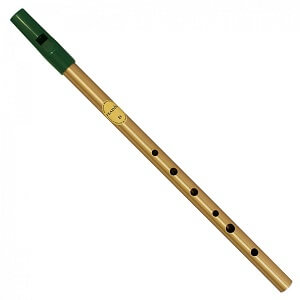Tin Whistle
 An instrument with an ancient and enduring history, the tin whistle (or penny whistle) is one of the most misunderstood and maligned of wind instruments. Often mistaken for a toy, this flute is, in capable hands, one of the most expressive and delightful of traditional musical instruments.
An instrument with an ancient and enduring history, the tin whistle (or penny whistle) is one of the most misunderstood and maligned of wind instruments. Often mistaken for a toy, this flute is, in capable hands, one of the most expressive and delightful of traditional musical instruments.
Originally made from a hollow bone, such as that of a bird’s wing, the tin whistle is a type of instrument known as a fipple flute, and is identical to the flageolet in its earliest form. As its name implies, it later came to be made of tin, and was first mass-produced in this form by Robert Clarke around 1840. Examples of bone whistles dating from the 12th century have been unearthed in High Street, Dublin, Ireland.
The tin whistle is, in physical terms, one of the simplest of instruments. The mouthpiece has a narrow windway, an opening or “window” cut in to the side of the instrument, and a sharp edge over which the player’s breath passes. The instrument has six front fingerholes and no thumbhole, distinguishing it from the recorder. The bore was often conical in older instruments (typified by the English-made Clarke tin whistle), while many modern whistles have a cylindrical tube and a plastic mouthpiece replacing the older wooden or lead plug. In recent decades, this instrument has been made from a wide variety of materials, including exotic woods, PVC plastic, aluminum, brass, composite materials, and even sterling silver.